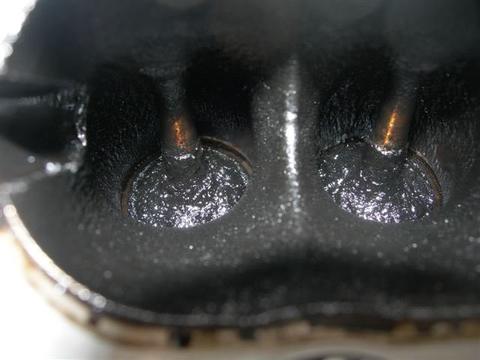
How does an oil catch can work and why is it beneficial?
Share
There is a large debate as to whether or not oil catch cans are worth the money or not. This article is dedicated to providing a very detailed explanation showing why a catch can is highly recommended in direct injection engine applications.
First, let's go over what is currently happening in your engine without a catch can installed. All internal combustion engines that run off gasoline are 4 stroke engines. This means that the piston has to go up and down a total of 4 times to complete a cycle. The piston first goes down with the intake valves open creating a vacuum. This draws in the cool dense air for combustion. At the same time, fuel is injected into the cylinder. The intake valves close and then the piston rises up towards the top of the cylinder. This compression creates an immense build-up of pressure in the cylinder. The only things containing this high pressure are the cylinder itself, the piston and the piston rings that seat against the walls of the cylinder. The intake and exhaust valves are obviously closed as well. The pressure is so high that a very small amount of the air escapes around the piston and piston rings into the crankcase. This is called blow-by. The amount of blow-by increases as the engine RPMs rise. Also, an engine with more cylinders will have more blow-by. Obviously not all of the air escapes or else combustion wouldn't take place. A diagram of the 4-stroke cycle can be seen below. Only the first 2 steps are relevant in regards to the catch can.

Inside the crankcase, you have the crank which is turning in the oil pan which is full of oil. This keeps it properly lubricated. PCV or positive crankcase ventilation is necessary to ensure there isn't a build up of pressure in the crankcase. This would cause the crankcase to possibly crack under the pressure and create a huge mess of oil on the street. So the PCV system removes the pressure from the crankcase and reverts it back through the intake tract via crank case vents. This pressure isn't made up of 100% air. It will also contain a very small amount of oil as well since there is so much in the oil pan at a high temperature. This air and oil mixture is then entered somewhere after the intake system, passes through the intercooler (if you car is turbo or supercharged) and then re-enters the combustion chamber (cylinder) through your intake valves to be re-burned. The oil will actually coat everything on its way back to the combustion chamber. It will develop in the intercooler, boost hoses, intake manifold and intake valves. Just on the other side of these valves is where the combustion is taking place where the temperatures are extremely high. This is what actually causes the oil to solidify on the valves. With the oil passing through the intercooler, it can actually coat the cooling fins which will hinder the intercooler's ability to cool the air therefore lowering the efficiency.
The caking on intake valves is only a problem with direct injection engines. For all other engines that use port injection, the gas is introduced before the combustion chamber which means it flows over the intake valves and enter the combustion chamber premixed with the air. This action of the fuel flowing over the intake valves actually cleans the valves from any oil that may already be on there. The oil never has the chance to cake on the valves in port injection engines.
Having oil caked onto your intake valves can cause the following symptoms:
- Knocking
- Pre-ignition
- Loss in power
- Loss in fuel economy
Here is an image of carbon build-up on valves. Yes it's nasty. :)

This is mainly due to the fact that the air that comes through your intake system and goes into the combustion chamber won't just be air. It will contain some oil particles which cause the combustion process to be slightly less efficient.
You might ask why do car manufacturers revert this crankcase pressure back into the intake tract? Well, for starters there isn't anywhere safe to revert it, and you can't expel it into the atmosphere because it's not environmentally friendly and is considered to not be street legal.
Another question that arises is why isn't a catch can included from the factory? Well it's pretty simple actually. Most people don't even change their oil at proper intervals (scary but true) so will they think to empty a catch can regularly? The answer is obviously and unfortunately, no.
An oil catch can catches or prevents the oil from re-entering the intake tract. A catch can is placed right after the PCV and before the intercooler. This means that a more pure (sometimes 100% pure) air mixture will go through the intercooler and intake valves. A more pure air mixture entering the intake valves means no caking and none of the symptoms listed above.
An oil catch can typically uses a baffle system that removes the oil from the air-oil mixture. The oil falls to the bottom of the can where it is stored until the can is emptied.
An oil catch can doesn't add any power or make any cool noises so it is often overlooked when modifying vehicles. However, a catch can will ensure you always have a cleaner intake tract free of oil, and help keep your engine running better for longer.

4 comments
Hi there,
Love your write up on Catch Cans; I myself have been using a Mann Provent 200 filter in my imported RHD Mitsubishi Pajero Turbo Diesel up here in Canada.
This device has been on my vehicle for over 50,000 mls; with the odd internal filter element cleaning or replacement the intercooler and inlet manifold stay spotlessly clean.
The reason the Mann Provent is the best, over after market systems, is the different Mann models available have two built in pressure relief valve’s, a must if you don’t want to risk a back pressure problem!!
In 2014 I bought a Mercedes E550 Convertible 4.7 biturbo, I would like to install a Mann Provent System on her, but are not too sure how to go about it, any suggestions would be appreciated??
Cheers.
hi,
this aplly also to the N/A engines?
thanks for your info
What do we do with the oil that the catch can catches ? I wouldnt want to lose it by dumping it out, do i just pour it back in the engine where i normally pour the oil ?
Brilliant write up ! Good read … thank you